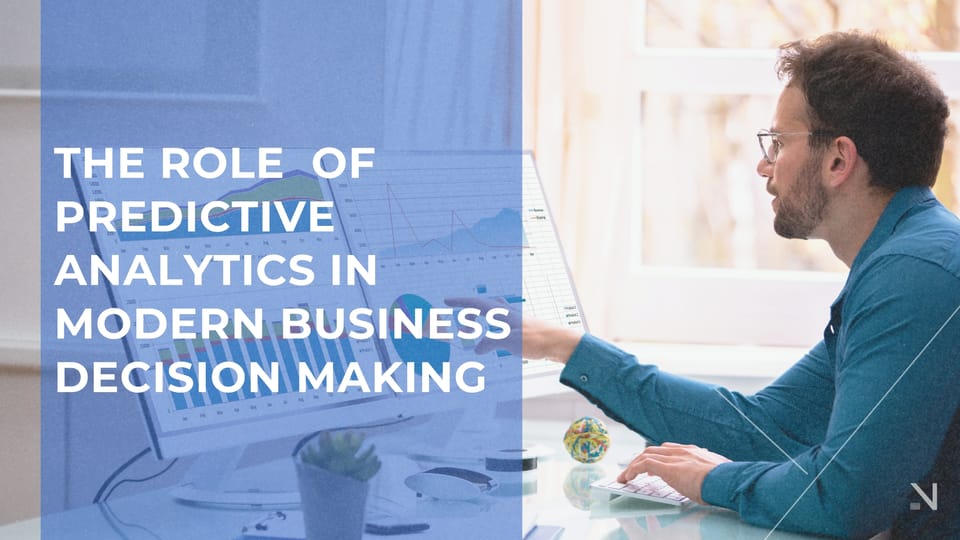The Role of Predictive Analytics in Modern Business Decision-Making
Narima Digital •

In today’s fast-moving business world, making the right decisions isn’t just about gut instinct—it’s about data. But raw data on its own doesn’t mean much. The real power lies in using that data to predict trends, spot opportunities, and avoid risks before they happen. That’s where predictive analytics comes in.
Whether you're trying to forecast sales, optimize marketing campaigns, or improve operational efficiency, predictive analytics in business can be a game-changer. Let’s dive into how this technology is reshaping decision-making and how you can leverage it for smarter business moves.
What is Predictive Analytics?
Predictive analytics is all about using historical data, statistical algorithms, and machine learning to predict future outcomes. Instead of just looking at what’s happened in the past, businesses can anticipate what’s coming next.
Here’s how it works. First, businesses collect data from various sources—sales reports, customer interactions, market trends, you name it. That data then goes through processing, where it gets cleaned up and organized. AI and machine learning models step in next, analyzing patterns and making forecasts. The result? Actionable insights that help businesses make better, data-driven decisions.
When done right, predictive analytics turns uncertainty into confidence, helping businesses stay ahead of the competition.
How Predictive Analytics Transforms Business Decision-Making
Now that we know what predictive analytics is, let’s talk about why it matters. Businesses across industries are already using it to improve everything from customer experience to financial planning.
Take sales forecasting, for example. Every business wants to increase revenue, but without accurate forecasting, it’s easy to overestimate or underestimate demand. With predictive analytics, companies can analyze past sales patterns, market conditions, and customer behaviors to make more accurate predictions about future demand. This helps them stock the right products, allocate budgets more effectively, and avoid unnecessary losses.
Marketing teams are also using predictive analytics to refine their strategies. Instead of running broad, one-size-fits-all campaigns, they can analyze customer data to personalize ads, email campaigns, and promotions. This not only improves engagement but also increases conversions because potential customers receive offers that are actually relevant to them.
Operations and logistics benefit, too. Companies using predictive models can anticipate supply chain disruptions before they happen. Imagine knowing in advance that a key supplier is likely to experience delays—this gives you the chance to secure backup suppliers or adjust inventory accordingly. Businesses that integrate predictive analytics into their supply chain management are more resilient and better equipped to handle market fluctuations.
Even finance and fraud detection are being transformed. AI-powered predictive models can detect suspicious transaction patterns in real-time, helping banks and e-commerce platforms prevent fraud before it even happens. By analyzing past fraud attempts, these systems learn to identify red flags and automatically block risky transactions.
How to Get Started with Predictive Analytics in Your Business
If predictive analytics sounds like something your business could benefit from, getting started isn’t as complicated as you might think. The first step is to define your goals—what exactly do you want to predict? Are you looking to improve sales forecasts, reduce customer churn, or optimize your marketing spend? Being clear about your objectives will help you choose the right approach.
Next, you’ll need high-quality data. Predictive models are only as good as the data they’re trained on, so it’s important to ensure that your data is accurate, up-to-date, and comes from reliable sources. This might mean pulling data from your CRM, website analytics, sales reports, or customer feedback.
Once you have your data, the next step is choosing the right predictive analytics tools. There are plenty of AI-powered platforms available, from Google Cloud AI and IBM Watson Analytics to Tableau and Power BI. The right tool will depend on your specific needs and how much customization you require.
Before fully integrating predictive analytics into your business processes, it’s a good idea to test and validate your models. Try running predictions on past data and see how accurate they are. Fine-tuning the model based on real-world performance ensures that your predictions are as reliable as possible.
And finally, remember that predictive analytics isn’t a one-time setup. Business conditions change, customer behaviors shift, and new trends emerge. The most successful companies continuously analyze results, refine their predictions, and adapt their strategies based on the latest insights.
The Future of Business is Predictive
Predictive analytics isn’t just a nice-to-have—it’s becoming essential for businesses that want to stay competitive. Whether it’s forecasting demand, personalizing customer experiences, optimizing operations, or detecting fraud, businesses that leverage predictive analytics are making smarter, faster, and more profitable decisions.
The question isn’t if you should use predictive analytics—it’s how soon can you start? If you’re ready to take your business to the next level with AI-driven insights, Narima can help. Let’s build a predictive analytics strategy that helps your business grow smarter.


